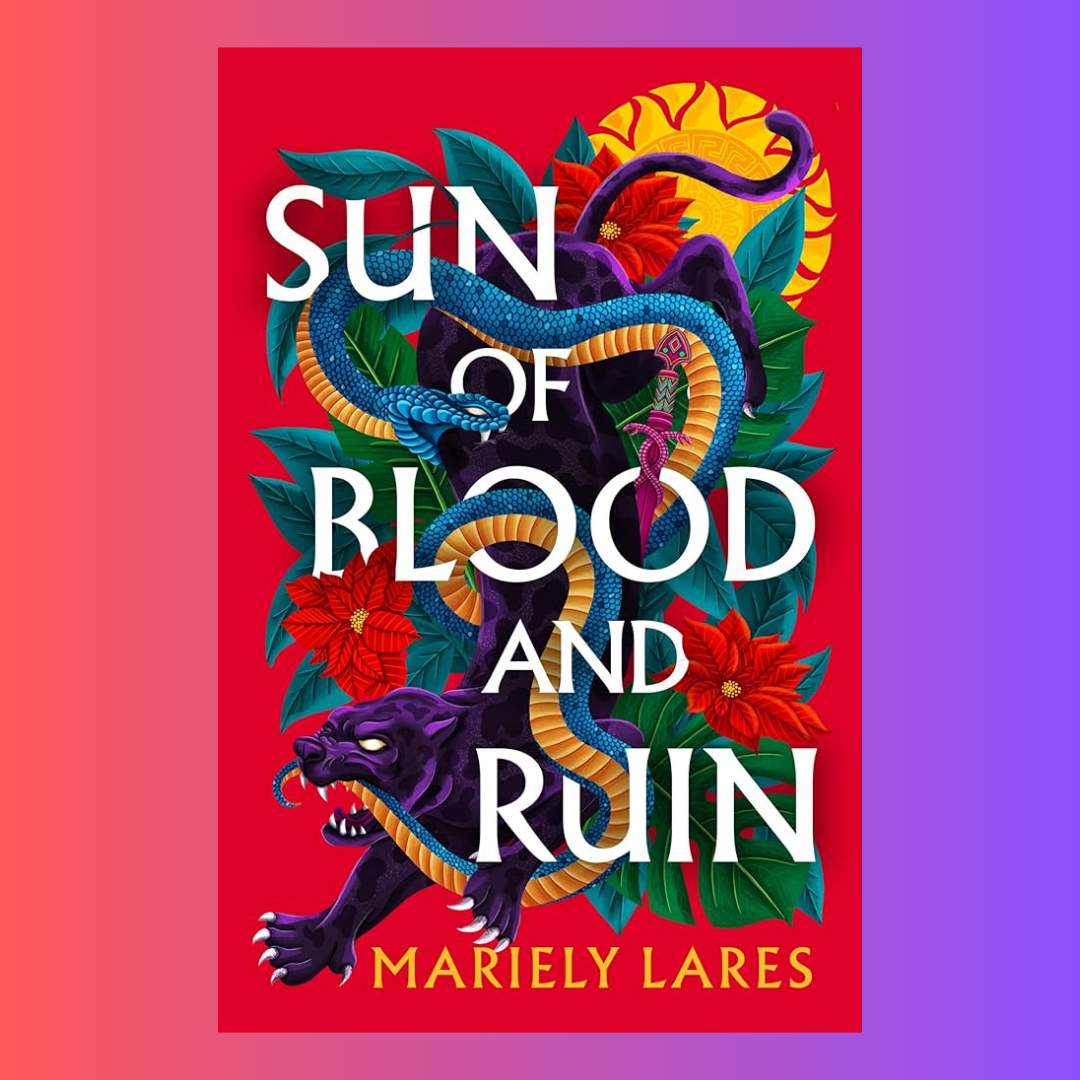BOOK REVIEW | SUN OF BLOOD AND RUIN | MARIELY LARES
Mexican history and Mesoamerican mythology meet in this thrilling historical fantasy with magic, intrigue, treachery, romance, and adventure.
The empire of Moctezuma II has long fallen, a city raised on the bones of Tenochtitlan. None dare whisper the names of their gods- or speak of the magic that once graced the land, of the witches who hunted as jaguars, the warriors who soared as eagles.
Until a new name emerges- a curse on the lips of the Spanish, a hero in the hearts of the people. A masked vigilante, a sorceress with a blade.
Pantera
But that is not her only name. To all who know her, Leonora de las Casas Tlazohtzin is a glittering jewel of court, promised to the heir of the Spanish throne. The respectable Lady Leonora faints at the sight of blood and would sooner be caught dead than wield a sword…even against a dauntless thief with a cutting smile.
No one suspects that Leonora and Pantera are one and the same. Leonora has fooled them all, and, with magic of her ancestors running through her veins, she is nearly invincible- until an ancient prophecy of destruction threatens, and she is forced to decide: surrender the mask or her life. But the legendary Pantera is destined for more than an early grave, and once she discovers the truth of her origins, not even death will stop her.
Publisher HarperVoyager (28 Sept. 2023)
Language English
Hardcover 384 pages
ISBN-10 0008609594
ISBN-13 978-0008609597
In 16th Century New Spain, the practice of witchcraft is punishable by death. The indigenous people have been subjugated by their Spanish masters, with their heritage and lands being systematically destroyed and stolen.
In amongst this, Leonora de Las Casas Tiazohtzin, lady of the ruling class, takes up the mantle of Pantera, face of the voiceless and represssed, to fight back and give the people that she half belongs to justice and a means to fight back.
Mixing, fantasy, history and mythology, Sun of Blood and Ruin is a mixed bag. The first half of the book sets the scene for a tale of prophecy and ultimately a coming of age drama.
At first the narrative is difficult to navigate as Mariely Lares does not hold the reader's hand, particularly in the pronunciation of the Mesoamerican names that pepper the story or the history that surrounds the colonisation of New Spain. Subsequently expecting the reader to know or find out the facts that underpin the story.
When hearing that this was a riff on the Zorro story, but with a female protagonist, I was expecting a zippy story of derring do, acrobatics and quippy one liners. However, this unfortunately was not the case, and there were many times I seriously considered tapping out in this book as it tends to spend a lot of it's time on the courtly dramas of Leonora.
When we get to the second act, the story does become a little convoluted as the various factions involved in the reclamation of New Spain come to the fore, and then we delve into a tale of rebellion and then ultimately what it means to straddle two cultures.
Then the third act takes us in a completely different direction. One that I was not expecting.
Ultimately, this is a little bit of a Frankenstein of a book with various bits stitched together to give the sum of its parts. Unfortunately, not all the parts fit together all that well, and there are times where I thought I could see daylight through the stitching.
However, there are some really good things in this book. I like that Mariely Lares does not hold the reader's hand with all the Mesoamerican mythology and history, opting instead to keep the narrative flow rather than stalling it with exposition to explain to the unenlightened reader what everything means. I'm being purposefully vague in some aspects of the plot because I don't want to spoil it for those that read it.
When the mythology does eventually kick in, the story starts to fly like the wind beneath Pantera's paws, and that's when the book comes alive.
All in all, whilst the book has some issues with plot and pacing, there are some really good fantastical aspects to this book and I think we may be hearing a lot more from Mariely Lares.






Comments
Post a Comment